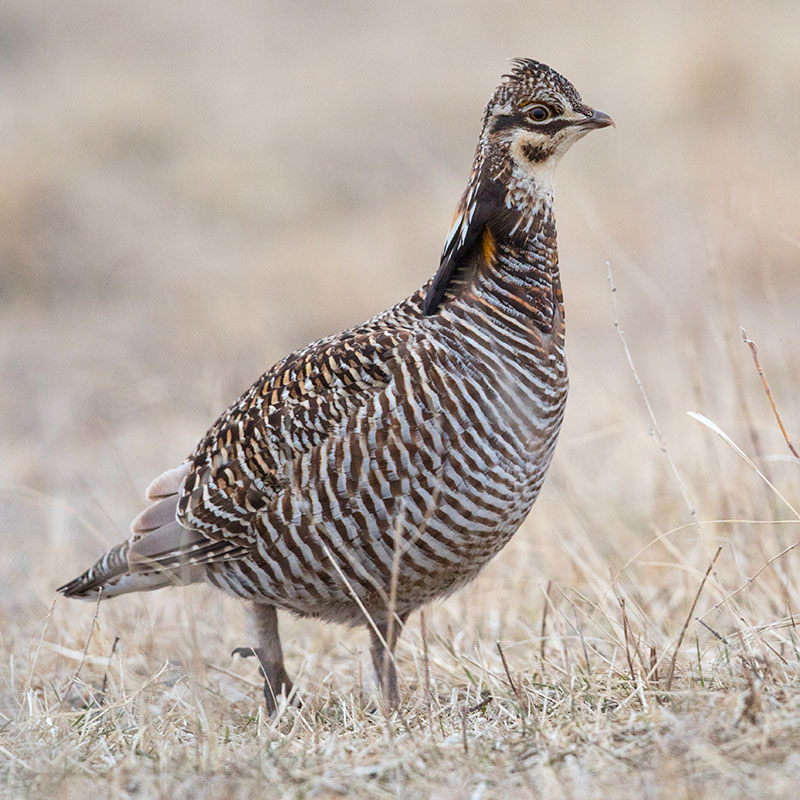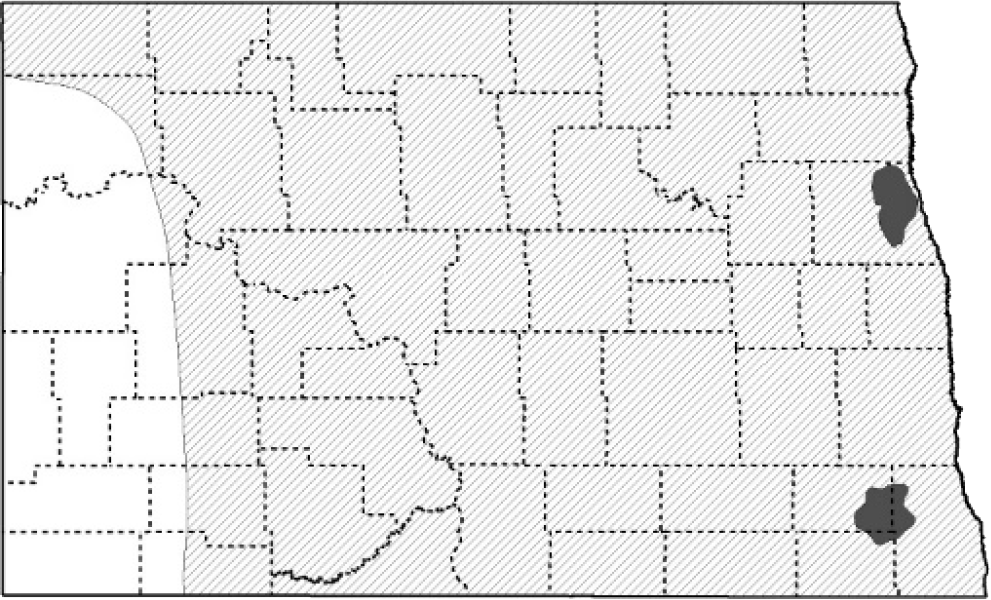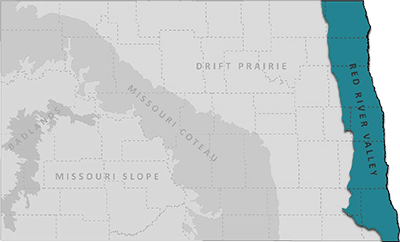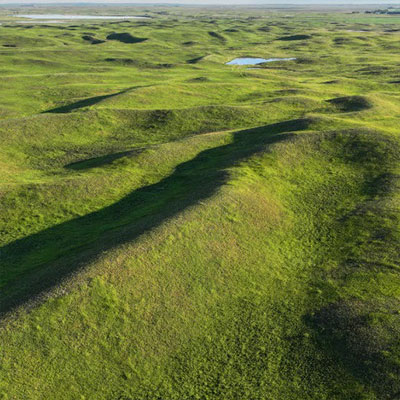Greater Prairie-Chicken

NDGF
L 17”, WS 28”, 2.0 lb. A short, rounded tail and completely barred body. Males have long tufts of feathers and orange air sacs on the sides of the neck.
Status in North Dakota
Year-round resident. Peak breeding season late April to late June.
Note: While considered a "game" species in North Dakota, the hunting season for greater prairie-chicken is closed indefinitely.
Reason for SWAP Designation
Regionally and globally imperiled, ND range important (SGCN a., b.).
ND ranks 7th out of 11 states for highest percent of the global population during the breeding season (eBird).
Following European settlement, populations were documented to have increased from 1880 to 1930, but current populations have declined >50% since 1970 (PIF).
At-risk of extirpation from North Dakota.
Threats
Loss of grassland.
Degradation of grasslands from invasive plants, woody encroachment, succession, and loss of diversity.
A lack of habitat corridors between outlying populations prevents interconnectivity among populations.
Nests may be parasitized by Ring-necked Pheasants, or pheasants may be the source of interspecific competition.
Hybridization with Sharp-tailed Grouse.
Increasing applications of agrochemicals and possible impacts to food availability for broods.
Mortality from collisions with fences, utility wires, and vehicles.
Research and Monitoring
Habitat requirements and demographic studies have been broadly researched on the breeding grounds.
The NDGF and cooperators conduct ground counts on prairie chicken leks in Grand Forks County and the Sheyenne National Grasslands.
Management Recommendations
- Protect remaining tallgrass prairie remnants, particularly where leks have been identified.
- Use native grasses and forbs when replanting or restoring grassland.
- Use rotational disturbance every 3-5 years, with prescribed burning as the preferred method.
- Minimize woody encroachment in priority management areas.
- Create habitat corridors to connect isolated populations.
- Do not mow or hay from April 15 – August 1. When cutting, leave the highest possible height (12-24 inches).
- Conscientious and appropriate application of agrochemicals.
- Avoid constructing fences through or near leks and install visibility markers to existing fences.
- Follow beneficial or best practices during the design, siting, construction, operation, and maintenance of tall structures (e.g. transmission lines, communication towers, wind turbines).



